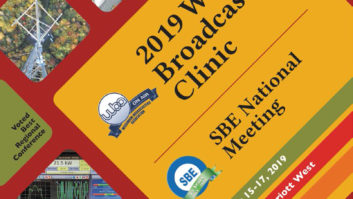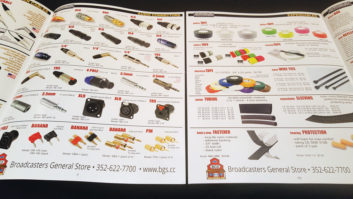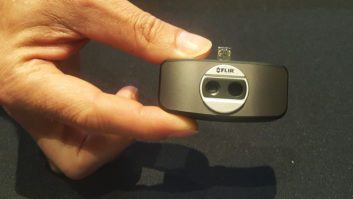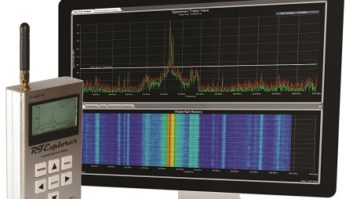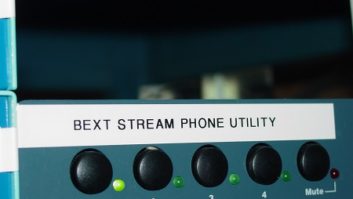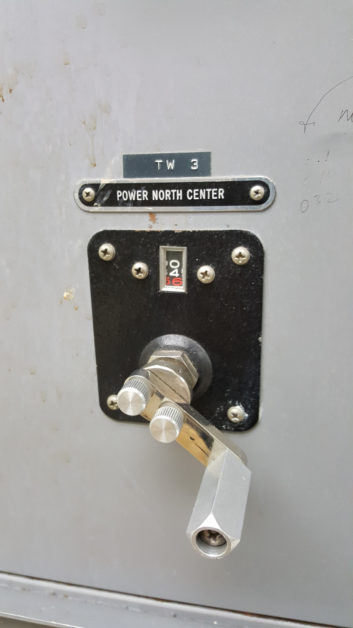
If you maintain an AM directional, why not put the summer sunshine to good use and perform a little preventive maintenance (PM)?
With your transmitter off the air and the breakers and interlock in place to prevent re-energizing, use a strong LED flashlight to view the variable coil and capacitor couplings from the back of the phasor. Remember before you begin to copy down all the turns-counter indications for each control as shown in the photo.
Then while your assistant rocks the component crank from side to side, check to make sure the couplings are tight so the variable coil or capacitor rotates smoothly.
I can’t tell you how many phasors our crew was called in to readjust because the setscrews holding the crank coupling to the component had become loose, so even though the engineer had turned the crank, one turn only adjusted the component by a half or even a third of a turn.
[Check Out More of Workbench Here]
In such a case, you can see how quickly you can get a phasor mistuned. When these setscrews are loose, there’s no consistency in how much the component is adjusted as the crank is turned.
The process isn’t a time hog and may save you hours of readjustment. While you’re inside the phasor, tighten all other strap and tubing connections.
Oops!
In the May 8 Workbench, I referred to selecting tower electrical connections “metrically.” Tom Weber, a principal in Weber Broadcast Services out of Greenwood, Ind., points out that I should have written “decimally,” as in tenths of an inch.
He’s right; metrically would assume millimeters or centimeters, which we are not using. We are converting inches to a decimal equivalent!
Tom concluded his note, “Yours in pedantry.” The sign of a great engineer!
Parts Is Parts
If you’ve recently needed to buy any broadcast gear, or for that matter any electronics, you may have encountered delivery delays caused by a parts shortage. The worldwide situation is causing problems for a lot of suppliers, so keep that in mind as you plan late summer or fall projects.
To complicate things, Workbench contributors Paul Sagi and Charles “Buc” Fitch, P.E., both reminded us of a related problem: counterfeit parts, including circuit breakers.
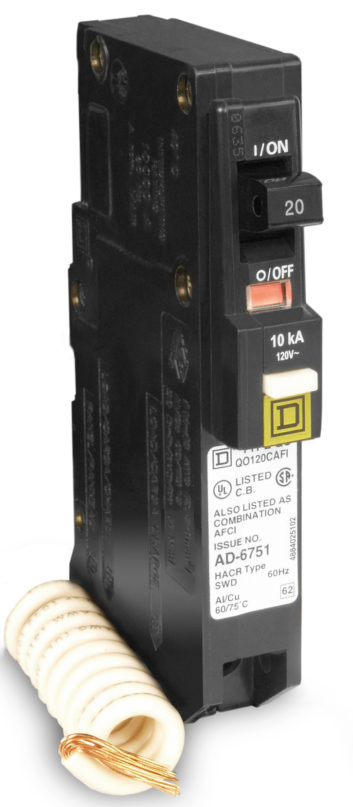
For example Square-D, part of Schneider Electric, which is headquartered in France, makes Homeline and QO circuit breakers in Mexico; but for various reasons the opportunity for counterfeiting such material is immense.
Also be aware that used and harvested circuit breakers, especially larger, more expensive ones above 60 amps, are out there in the marketplace. Most of these were rejected because of trip problems; they may be touched up cosmetically, perhaps with new lug screws to remove tooling marks, and then sold as new.
The problem extends all the way through replacement parts in a variety of industries. In the communications business, RF transistors are especially subject to international counterfeiters.
Paul and Buc have both seen reports of numbers being stripped from similar solid-state device packages. Unfortunately these look-alikes are of insufficient capability and do not meet the high-performance specs of the number now imprinted on the device. The cheaper chips are then sold at a premium price, realizing profits of 400% or more. Profits can be even higher if the substitute device is not even an RF transistor or a “pull” or dud, none of which will meet spec.
Many entities cooperate in these crimes and profit from them. Because so much manufacturing is now done outside of North America, the provenance of parts can be very iffy. If the price looks too good to be true, it probably is. Save yourself the frustration and buy your parts from reputable dealers.
Here are helpful resources on the counterfeiting of circuit breakers. At www.ecpowersystems.com/resources/circuit-breaker, scroll down to “How to spot fake circuit breakers.” Or Google “Identifying Counterfeit Square-D Circuit Breakers” and look for the result that points to www.lanl.gov.
Last, Schneider Electric has a page dedicated to awareness and action against counterfeits. “We take counterfeiting of our products seriously and pursue every means possible to stop this illegal activity while making the industry and public more aware of this critical safety concern,” it states. See www.se.com/us/en/work/support/counterfeit.
Poof! Soundproofing!
In his engineering career, Dan Slentz has used a variety of soundproofing materials in constructing studios. But he laments that many products have gotten very expensive, forcing him to search for alternatives to keep within a budget.
One option is common mineral wool insulation, the properties of which allow for excellent sound blocking in walls, more so than fiberglass.
For studios, Dan has built double walls that do not touch but have a foam board between them. He then places mineral wool in each 2 x 4 wall. He completes the job with double sheetrock on the outside.
This can be a bear to construct, but short of bringing in a pro “acoustician,” it is a functional poor-man’s construction.
Dan has also used Troy Board (which was named after the inventor’s second son). It’s like a “shredded-wheat” board material but it’s really heavy. It can be painted, and it’s meant to block audio transfer. Check out https://troyacoustics.com/applications/broadcast-recording.
If you’re looking for the cheapest acoustic foam, try the Foam Factory. While its prices have increased lately, they tend to be less than those of similar products. They also vacuum-suck their product before shipping, so the packages arrive very small; the instant you cut it open, Poof!, it opens up and decompresses, taking about a day to recover fully.
Find more info at www.thefoamfactory.com.
John Bisset, CPBE, has more than 50 years in the broadcasting industry and 31 writing Workbench. He handles western U.S. radio sales for the Telos Alliance and is a past recipient of the SBE’s Educator of the Year Award.
Workbench submissions are encouraged and qualify for SBE recertification. Email [email protected].
